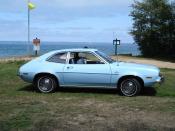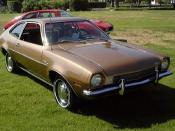FactsOn Tuesday August 9, 1977, Herbert L Misch, vice president of environmental and safety engineering at Ford Motor Company (Ford), read an unfavorable article entitled "Pinto Madness" published by Mother Jones magazine (1). This self-styled radical magazine had cited ford "secret documents' which, according to the author, proved the company had known for eight years that the Pinto was a "firetrap" (2).
The article claimed that preproduction rear-end crash tests had revealed the dangerous nature of the design and placement of the car's fuel tank (3). The magazine article claimed that Ford was so anxious to get the car on the market that it decided design changes would not be made and would "take too much time and cost too much money" (4). The article further charge that Ford had used "some blatant lies" to delay enactment of a government safety standard that would have forced Ford to change the Pinto's "fire-prone" gas tank (5).
The article concluded: "by conservative estimates, Pinto crashes have caused 500 burn deaths to people who would not have been seriously injured if the car had not burst into flames" (6).
Nothing in Ford's records supported the contentions made in the article. Nevertheless, Misch knew that the overall effect of this Mother Jones' article, one that relied heavily on the testimony of a former Ford engineer, could be highly damaging to the company (7). It would also sharpen consumer criticism of the US auto industry in general and Ford in particular. Misch and his associates at Ford were angered by the allegations and are ready to denounce the article as "unfair and distorted" (8).
The development of a large consumer movement, along with the enactment of the National Traffic and Motor Vehicle Safety Act of 1966, had revolutionized the auto business in the US...


